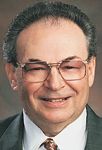Article
Physician shortage impending in U.S.
Partially due to the expansion of costly technology and escalating healthcare costs there has been a recent decline in the value of physicians' experience, knowledge and judgment. Reluctant patients feel that the best technologies and outcomes should be available to them without paying high costs. Young physicians are more attracted to jobs with time off and benefits as opposed to career challenges. This situation will lead to a return to a market-based economy for ophthalmologists, with an increase in competition.

Key Points

Recently, however, a decline in the value of physicians' experience, knowledge, and judgment has occurred, partially due to the explosive expansion of costly technology and escalating healthcare costs. Although patients expect that the best technologies and outcomes should be available to them, they have been reluctant to participate in the cost.
Also, awareness of iatrogenic disease, created by sensationalistic press, has increased. Thalidomide created many birth defects-more in Europe than elsewhere-but other drug side effects became more apparent. Hospital-based infection is a problem of which many people are aware, and physician errors, such as inappropriate medications and wrong-side surgery, all have led to some skepticism of health-care delivery.
Medicare, which began in the early 1960s, has placed physicians in a socialized environment with respect to remuneration for the past approximately 20 years, but physicians remained in a market-based environment with respect to costs such as rent, equipment, personnel, etc. This situation is the worst of all possibilities. As physician remuneration has decreased, costs have increased. This reality has been compounded by the effects of the malpractice crises, which remain unabated in many places.
These issues have led to skepticism on the part of many young physicians who are more interested in pursuing jobs with associated time off and benefits than challenges and careers. In addition, physicians leaving training have lost the ability to choose a practice location, needing access to insurance panels; many are unable to gain that access and are, therefore, unable to return home to practice. This issue has led to frustration, cynicism, and early retirement. When I arrived in Oregon in 1970, the average age of retirement for an ophthalmologist was approximately 70 years, but more recently, it has been closer to 55 years.
The practice model that resulted was one of high-volume, efficient, low-cost care. The irrepressible advance of technology, however, has created a situation that is a challenge to Medicare. Medicare was confronted with three choices as new technology increasingly became available: 1) Medicare could pay for that technology and go broke overnight, 2) it could deny access to that technology by Medicare recipients and thus create second-class citizens of Medicare recipients, or 3) it could allow patients to pay to participate in the increased cost of technologically advanced care. Medicare opted for the third choice with respect to new, high-technology presbyopia-correcting IOLs, and that decision will lead to a new ophthalmic practice model characterized by high-quality, personalized, patient-paid care.
This model will create a huge opportunity and challenge for many ophthalmologists, but it also can create a quadruple win:
1) Patients can achieve refractive lens-based surgery to address all of their refractive errors and visual acuity desires.
2) Physicians can offer these surgeries to patients without the intrusion of government or private insurance companies, and they will have a less disruptive relationship with their patients.
3) The ophthalmic industry can gain a reward for its investment in new technology.
4) Health-care financing will be the biggest winner, as increasing numbers of baby boomers opt for refractive lens exchange, reaching Medicare with pseudophakia.




